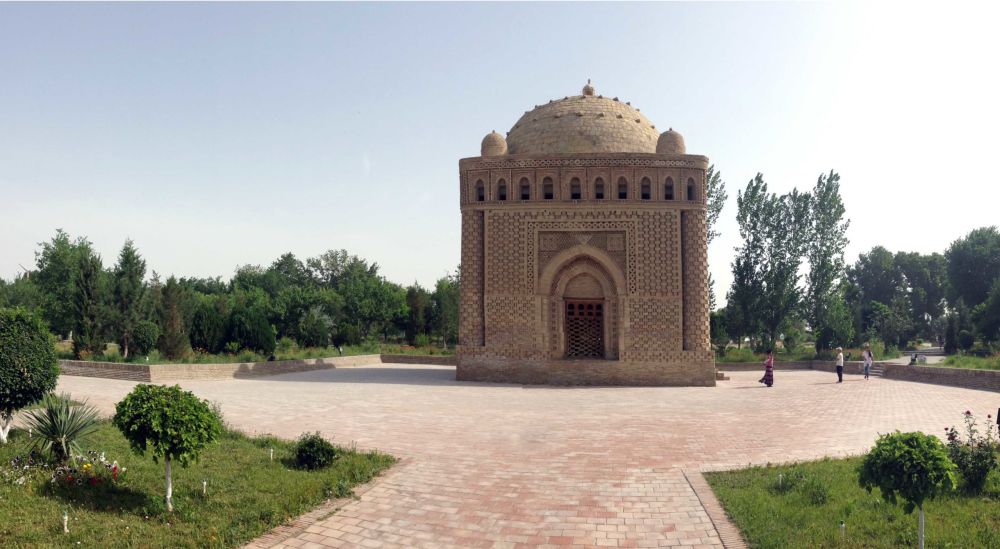The Ismail Samani Mausoleum, located in the historic city of Bukhara, Uzbekistan, is a significant architectural masterpiece of the 10th century. This mausoleum was built as the final resting place of Ismail Samani, the founder of the Samanid dynasty, one of the most influential local Persianate Muslim dynasties of Central Asia. It is one of the oldest monuments in Bukhara. The structure is renowned for its intricate brickwork, which creates elaborate patterns and displays the exceptional craftsmanship of the period. The mausoleum marks a departure from the use of large-scale murals and introduces the use of baked bricks and mortar in geometric patterns. The cube-shaped structure is capped with a dome, signifying the heavens, and has been an inspiration for Islamic architecture for many centuries. Despite invasions and natural disasters, the Ismail Samani Mausoleum has remained remarkably well-preserved, reflecting its initial grandeur and standing as a symbol of cultural continuity and architectural innovation in Central Asia.

